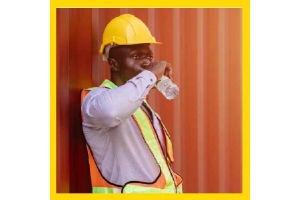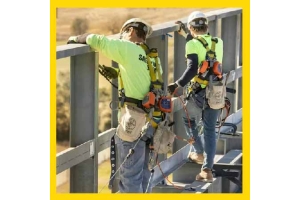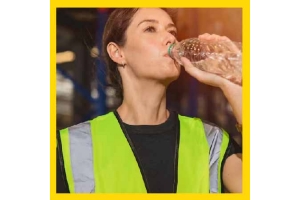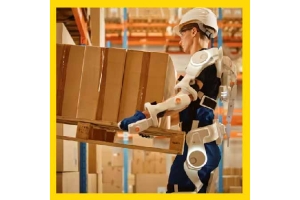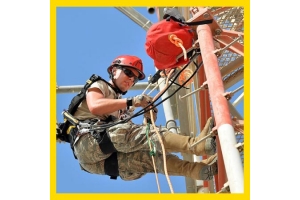Currency
September 05, 2022
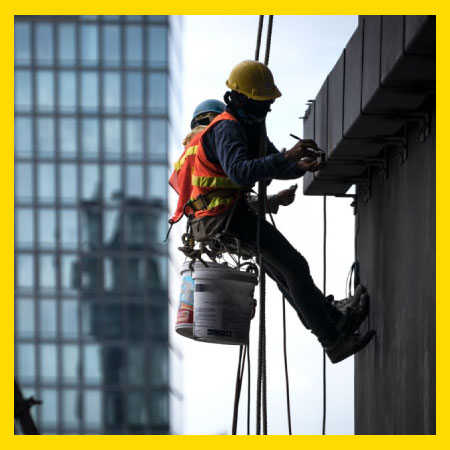
A worker can experience a fall in the blink of an eye, caused by a momentary lapse in concentration, misplaced footing, reaction to an unexpectedly loud noise, slipping or simply loss of balance. Falls are the second leading cause of workplace fatalities. But they don’t have to be. There is a lot that can be done to prevent falls, and it all comes down to understanding the fundamentals of fall protection.
While there has been progress in recent years, falls from height remain a common cause of injury and death in industries such as oil and gas, construction, civil engineering, maintenance, scaffolding and utilities. Examples of when a worker may experience a fall include construction workers moving around a flat roof or a scaffolder putting platforms in place on the side of a building. No matter the environment, the safety of workers at height depends upon a process of rigorous risk assessments and detailed planning, followed by the application of best practice techniques and, of course, sourcing and using PPE that complies with the necessary standards.

All projects require planning, and planning for jobs that may require work from heights must begin with a risk assessment. At the outset of a project, the first step to mitigate risks is to identify foreseeable hazards and help to eliminate them. After all, the most effective remedy is avoiding work near edges wherever possible. However, for many jobs, this is unavoidable. In these instances, control measures need to be implemented and regularly reviewed to maintain a healthy and safe work environment.
Identifying fall hazards requires locating all places and tasks where falls might occur. Spaces that typically need extra attention include:
Inspecting the workplace also means talking to workers and technical specialists to check various aspects such as the design, layout and ultimately, stability of these structures and their load bearing capacity. The proximity and number of workers that work in unsafe areas and the quality of lighting are also aspects that should be considered.
Lastly, a proper assessment also includes reviewing all the available documents for a site including incident records and “near miss” incidents, which include events where no one was injured but if there was a slight shift in time or the worker’s position an injury could have occurred. It is useful to check information available from regulators, industry associations, unions and safety consultants so that dangerous situations are not repeated.
There are three core components of a fall arrest system, and they can easily be remembered as the ABCs of fall protection: anchors, body wear and connectors. Each of these components is critical for helping protect workers at height, and if one component is missing, then the system cannot work. Individually, these components will not provide protection from a fall. However, when used properly and in conjunction with each other, they can help keep workers safe.
Commonly referred to as the tie-off point, anchors are secure points of attachment for horizontal or vertical lines, lanyards and other equipment to support the loads imposed during a fall. They can be permanent or temporary and vary to suit the type of structure available. When looking to establish an anchor point, workers should look for things that are structural, like beams, columns, channels, floors or roof trusses. They should avoid less stable options like conduit, PVC pipe, light cross bracing, power lines, fences, handrails or suspended ceilings.
While there has been progress in recent years, falls from height remain a common cause of injury and death in industries such as oil and gas, construction, civil engineering, maintenance, scaffolding and utilities. Examples of when a worker may experience a fall include construction workers moving around a flat roof or a scaffolder putting platforms in place on the side of a building. No matter the environment, the safety of workers at height depends upon a process of rigorous risk assessments and detailed planning, followed by the application of best practice techniques and, of course, sourcing and using PPE that complies with the necessary standards.

Conducting a Comprehensive Fall Risk Assessment
All projects require planning, and planning for jobs that may require work from heights must begin with a risk assessment. At the outset of a project, the first step to mitigate risks is to identify foreseeable hazards and help to eliminate them. After all, the most effective remedy is avoiding work near edges wherever possible. However, for many jobs, this is unavoidable. In these instances, control measures need to be implemented and regularly reviewed to maintain a healthy and safe work environment.
Identifying fall hazards requires locating all places and tasks where falls might occur. Spaces that typically need extra attention include:
- Structures being constructed or installed, demolished or dismantled, inspected, repaired or cleaned
- Fragile surfaces such as rusty metal roofs and skylights
- Potentially unstable surfaces
- Elevated work platforms or portable ladders
- Sloping or slippery surfaces such as glazed tiles
- Unprotected open edges
- Holes or pits
Inspecting the workplace also means talking to workers and technical specialists to check various aspects such as the design, layout and ultimately, stability of these structures and their load bearing capacity. The proximity and number of workers that work in unsafe areas and the quality of lighting are also aspects that should be considered.
Lastly, a proper assessment also includes reviewing all the available documents for a site including incident records and “near miss” incidents, which include events where no one was injured but if there was a slight shift in time or the worker’s position an injury could have occurred. It is useful to check information available from regulators, industry associations, unions and safety consultants so that dangerous situations are not repeated.
Learning the ABCs of Fall Protection
There are three core components of a fall arrest system, and they can easily be remembered as the ABCs of fall protection: anchors, body wear and connectors. Each of these components is critical for helping protect workers at height, and if one component is missing, then the system cannot work. Individually, these components will not provide protection from a fall. However, when used properly and in conjunction with each other, they can help keep workers safe.
Finding the Right Anchor Point
Commonly referred to as the tie-off point, anchors are secure points of attachment for horizontal or vertical lines, lanyards and other equipment to support the loads imposed during a fall. They can be permanent or temporary and vary to suit the type of structure available. When looking to establish an anchor point, workers should look for things that are structural, like beams, columns, channels, floors or roof trusses. They should avoid less stable options like conduit, PVC pipe, light cross bracing, power lines, fences, handrails or suspended ceilings.
